Art&Play Play



September


























‘HI-FRUCTOSE’ CREATORS ARE SWEET ON RICHMOND




September


























‘HI-FRUCTOSE’ CREATORS ARE SWEET ON RICHMOND
Garbage is a manufactured product, created when otherwise recoverable resources are mixed and mashed together. Most rooms in every building in the whole country have a basket where this manufacturing begins. Discarded resources are put in one by one, then dumped into a larger bin, and then into a truck with a more modern body based on this one. A hydraulic piston smashes everything together The objective is to pack in more cargo before the truck has to be driven to where it can dump onto the land, to be covered in a “sanitary“ way. Liquids leach out and make their way into the planet's

NASA's Astronomy Picture of the Day from February 12, 2002, colored the methane in the Earth's atmosphere green, and an animation showed how it spins to the poles NASA said, “Methane (CH4) is second only to carbon dioxide (CO2) in creating a warming greenhouse effect The largest abundance released by the US … is created when anaerobic bacteria break down carbon-based garbage in landfills.” [Emphasis added ]

water eventually. These “sanitary” methods of filling the land (hence “sanitary landfills”) also provide for anaerobic decomposition of organic materials – which makes methane.
Landfills are the largest human-created source of methane. In the short term methane is 80-100 times
more powerful than carbon dioxide to warm the planet.
If you're not
how much waste are you for?
Urban Ore has been salvaging for reuse in Berkeley since 1981. We have 3 acres of secondhand goods, open 360 days a year until 5:00PM, 900 Murray St. near 7th x Ashby Come shop






This summer, my partner and I hosted our first art salon.
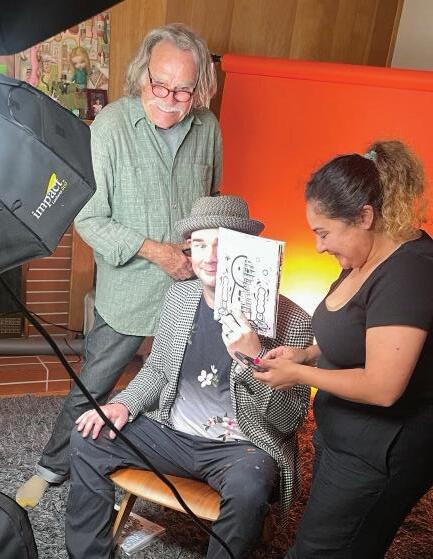
It’s not as pretentious as it sounds! Gathered in our backyard on benches and pillows, friends sang, played guitar, recited poetry and epic limericks, acted, danced and executed other feats. At the same time, a family member sketched every performer in real-time. More than anything, it was lifeaffirming. A celebration of creativity and community.
Those ideas guide this issue as well. I’m charmed and inspired by the playful ethos of Richmond artists Annie Owens and Daniel “Atta Boy” Seifert. Their commitment to subversive art is not only admirable but vital. For many of us, it’s therapeutic. Now, especially.
Latching onto that idea, albeit with
literature, is yet another “only in the Bay Area” endeavor: BART’s book club, where bibliophiles commune on trains for readings between stops. This is quite the upgrade from other passenger-led activities usually seen on public transport. We often think of jewelry in terms of material value or ethics. But its art form can be as evocative and powerful as a painting or a poem. Look to April Higashi’s Shibumi Gallery as an example.
As we use artistic expression and communion to heal, so do we use learning to evolve. Bioneers is expanding their annual conference’s environmental advocacy leadership with an online educational platform. It’s encouraging that more of us can learn from today’s greatest thinkers in sustainability, hyper-locally (i.e., from our living rooms).
Not all brains are alike. Thankfully, more local schools now offer programming to meet “differently brained” (or neurodivergent) students where they are. The future will need all kinds of thinking.
And then there’s honoring our past. Mosswood Cottage is a historic representation of Gothic architecture in Oakland. Its preservation conflicts with other municipal needs—but also time and bureaucracy.
Considering all of these East Bay acts of creativity and community, sustainability and legacy, I can’t help but think of Maui, my former island home. May their slow but steady recovery build upon these ideals and remind us how connected we all are, in profound tragedy and determined triumph. — Samantha Campos





For nearly 160 years, the Joseph Mora Moss House has survived in Mosswood Park, at what is now Broadway and MacArthur Boulevard in Oakland’s Temescal neighborhood. Built in 1864, while the Civil War was raging back East, it was described by the Historic American Buildings Survey in 1960 as “One of the finest if not the finest existing example of Gothic architecture—to be found in the East Bay, and possibly in Northern California.”
In 1975, it was listed as Oakland Historic Landmark #6, worthy of being preserved as a unique historic resource. Until recently, its survival was endangered by a combination
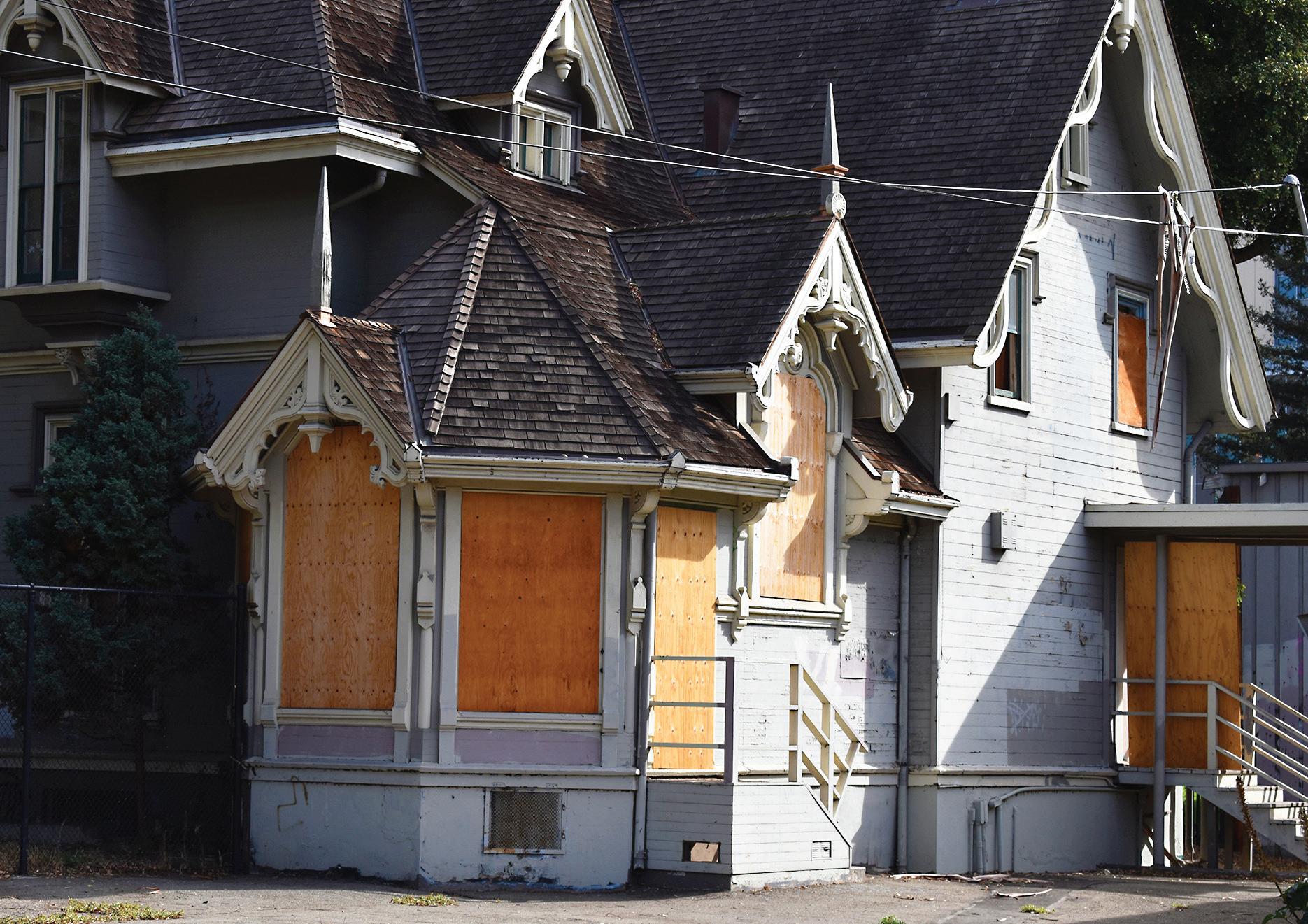










« of inaction by previous Oakland city administrations, and vandalism and recurring fires caused by some of the people residing in homeless encampments that have existed in the park for many years.
The future restoration and preservation of Mosswood Cottage, as it’s popularly called, was in conflict with the needs of these encampments, since efforts to relocate those unhoused citizens can’t be accomplished until there are enough shelter beds for them. A 2018 decision by the Ninth Circuit Court of Appeals, Martin vs. Boise, required cities and counties to find enough beds for everyone living in a homeless encampment before they can be relocated.
A possible solution for this conflict, as well as other steps that need to be taken to preserve Mosswood Cottage, is being actively discussed by a neighborhood group, Friends of Mosswood House, and Oakland’s current city administration. But major challenges remain in carrying out any resolution for preserving and restoring this historic landmark, so that it may become a valuable community and cultural resource.
Mosswood Cottage has an interesting history. Joseph Moss immigrated to San Francisco from Philadelphia in 1854 and became a successful businessperson, engaging in banking, public utility enterprises and an ice company. He also joined several civic organizations, including the California Academy of Sciences and the California School for the Deaf and Blind. In 1868, he became a member of the Board of Regents of the University of California.
Then in 1863, Moss purchased a 32-acre plot that was just north of the Oakland City limits. The next year, he hired architect R.S.H. Williams to complete the design of a “Gothic cottage” for his primary residence. This style was popular during the Victorian Era, having been inspired by the medieval novels of Sir Walter Scott from the early 1800s. The type of home he built was called a “cottage” in Victorian times, because it has one full story on the first floor, and a smaller second story.
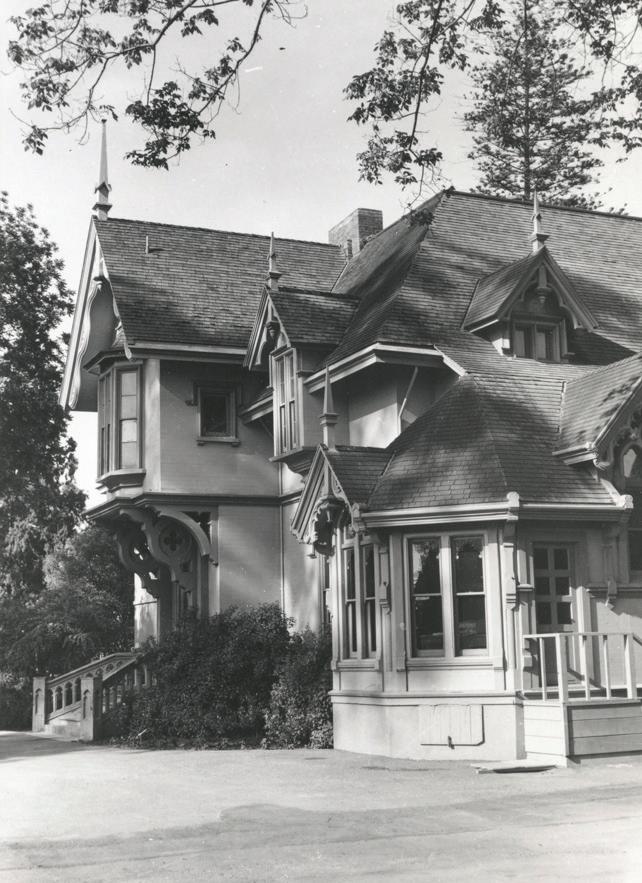
The construction was completed late in 1864, at a cost of $14,500. The grounds were also carefully landscaped, with lush flower beds; pine, oak and eucalyptus trees; and expansive lawns, some of which were incorporated into what would later become Mosswood Park.
Mosswood Cottage has retained all of the original features that make it an outstanding example of Victorian Gothic Revival architecture. The twostory house sports a profusion of highpeaked gables, decorated with a variety of scalloped and snaking barge boards topped with steeple-like finials that
create a Romantic image. Ornately carved original front doors remain, though they were damaged by a fire recently, and are now covered by a padlocked fake door.
In addition, the original Gothic pointed-arch latticed windows survive, and several have intricate stained glass patterns. Inside, the first floor has a library, study, parlor, kitchen and dining room, and the second floor has six bedrooms. The house was built with the finest materials, including sawn-wood oak floors, redwood wall paneling, and marble sink tops and fireplace mantels, most of which are still in place.


Located in a rural setting at the eastern edge of Contra Costa County, Discovery Bay Country Club is a place of stunning beauty, complete with all the luxuries, comforts, and indulgences you would expect from an exquisite private country club. The perfect setting for your wedding ceremony, Discovery Bay offers an exquisitely landscaped property that is filled with trees, ponds, and vibrant flower gardens.

Whether your affair is an intimate gathering or a reception for as many 200 guests, they can be comfortably accommodated in our elegant dining room that boasts breathtaking views of Mt. Diablo and our picturesque golf course.
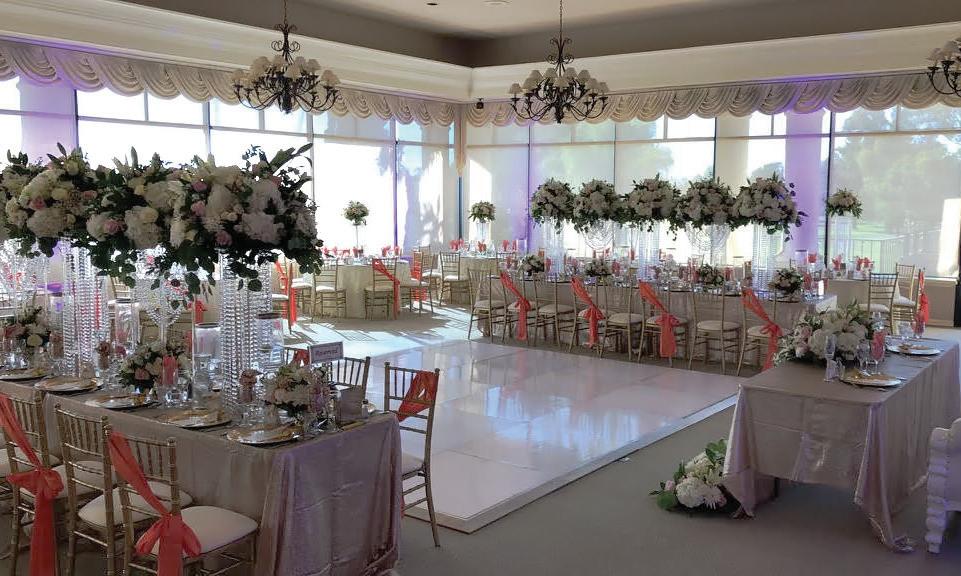
To ensure your celebration is truly unique, the Executive Chef, Culinary Team, and Event Coordinator will work with you to plan and carry out every detail of your celebration to ensure that your once-ina-lifetime day is both magical and memorable!

When Moss died in 1880, his widow inherited the property. And when she died childless in 1904, her heirs sold the remaining 11-acre site to a group of bankers at a public auction. In 1907, Oakland voters approved a bond measure to buy the plot and turn it into a city park. A wrought iron fence was then erected around the house to protect it from vandals. That fence was removed many years ago.
Mosswood has been owned by the City of Oakland’s park department since 1910, which was recently renamed the parks, recreation, and youth development department by Mayor Sheng Thao’s new administration. Until the 1990s, the house was used as a facility for civic activities including public meetings, lectures, and after-school activities and school field trips. It was then closed to the public and used as a storage unit for several years, and has been vacant and suffering the effects of deferred maintenance for decades.
This summer, the City of Oakland erected a seven-foot-tall chain-link fence around the house to protect it during the construction of a new recreation center,
and from further vandalism (the old rec center was destroyed by arson in 2016). Funds were recently allocated by the current Oakland City administration to build the new recreation center next to the cottage. Funding will be allocated to restore the house once phase three of the new rec center construction is completed. Thus, it could be several years before restoration work begins on Mosswood Cottage.
According to Dana Riley, assistant director of the parks, recreation, and youth development department, “The city’s Community Homelessness Services Division will manage any relocation of those homeless residents that may be necessary to begin construction on this project,” which Riley stated was scheduled to begin before the end of this summer, though no firm date has been set.
Meanwhile, architectural and engineering studies are needed to cost out a realistic budget for stabilizing and fully restoring Mosswood Cottage. One preliminary engineering estimate called for the old brick foundation to be replaced first, which would drive up the total cost
of a full restoration to an unrealistically high figure that would clearly be a nonstarter for the cash-strapped City of Oakland to absorb.
The city’s current budget deficit is estimated to be $360 million over the next two years. However, historic landmarks are not required to have brick foundations replaced, only re-enforced. Friends of Mosswood House is trying to arrange for a new, more realistic architectural study and restoration estimate, one that could bring the cost down to below $10 million.
Based on past uses of Mosswood Cottage by the City of Oakland, some future options for an adaptive reuse of the house might include having a local or regional nonprofit group take out a long-term lease on the house, so it could be repurposed as a performing or visual arts center, or perhaps some type of community resource facility. But given the uncertain future of the house, any specific proposed future use will have to await the completion of a realistic budget to take to the City of Oakland for a full restoration of this irreplaceable historic treasure.
Mosswood Cottage has retained all of the original features that make it an outstanding example of Victorian Gothic Revival architecture. It has been owned by the City of Oakland’s park department since 1910.




















Oakland’s track record on restoring its most valuable historic buildings and creating adaptive reuses for them has been an encouraging one. The best known example of such enlightened policy regarding the city’s historic sites is the Paramount Theater, on Broadway at 21st Street. Designed in 1931 by the famed Bay Area architect Timothy Pfleuger, this Art Deco masterpiece was the largest movie theater on the West Coast when it opened. It fell on hard times during the 1960s with the decline of attendance at large single-screen movie theaters. What followed was that it was closed during the early 1970s and sat empty, facing an uncertain future.
Then in 1972, the Oakland Symphony purchased the building for $1 million, with half of that amount donated by the theater group that owned it, and the other half from private donors. The entire building underwent a painstaking restoration in
1973, and reopened later that year.
For the past 50 years, the Paramount has been used as a multi-purpose performing and visual arts facility, and it has hosted: concerts of jazz, blues, R&B, rock, gospel and classical music; variety shows, comedy acts, live theater and the Oakland Ballet; and screenings of silent and classic Hollywood films. The building was placed on the National Register of Historic Places in 1973, and designated a California Historic Landmark in 1976.
Another restoration success story is the Fox Oakland Theater, located at 1815 Telegraph Ave. in Uptown Oakland. Designed by the prolific local firm of Weeks and Day in a mixture of Hindu and Islamic motifs, this was the first sound movie theater west of Chicago when it opened in 1928. The Fox suffered declining attendance in the early 1960s, and closed as a movie theater in 1965. Following a decade of occasional use as a venue for various events, the theater was in such disrepair that the city’s public
works department actually suggested demolishing it and replacing it with a parking lot.
After sitting empty for decades, The Oakland Redevelopment Agency bought the Fox in 1996 for $3 million. A group of concerned citizens, Friends of the Oakland Fox, began preliminary restoration work, and then Mayor Jerry Brown proposed housing Oakland Charter School for the Arts in the building. The Friends and the city’s Redevelopment Agency eventually raised $75 million for a full restoration and adaptive reuse of the Fox. The theater reopened in 2009. Besides the charter school, the auditorium has been used for music concerts, stand-up comedy acts, lectures and political events.
Those citizens who are working diligently to restore Mosswood Cottage as an irreplaceable historic treasure and community resource can take inspiration from such examples of Oakland’s past successes in historic preservation. ❤
Based on past uses of Mosswood Cottage by the City of Oakland, some future options for an adaptive reuse of the house might include having a local or regional nonprofit group take out a long-term lease on the house, so it could be repurposed as a performing or visual arts center, or perhaps some type of community resource facility.

















Richmond’s Daniel Seifert and Annie Owens subvert and celebrate ‘new contemporary art’
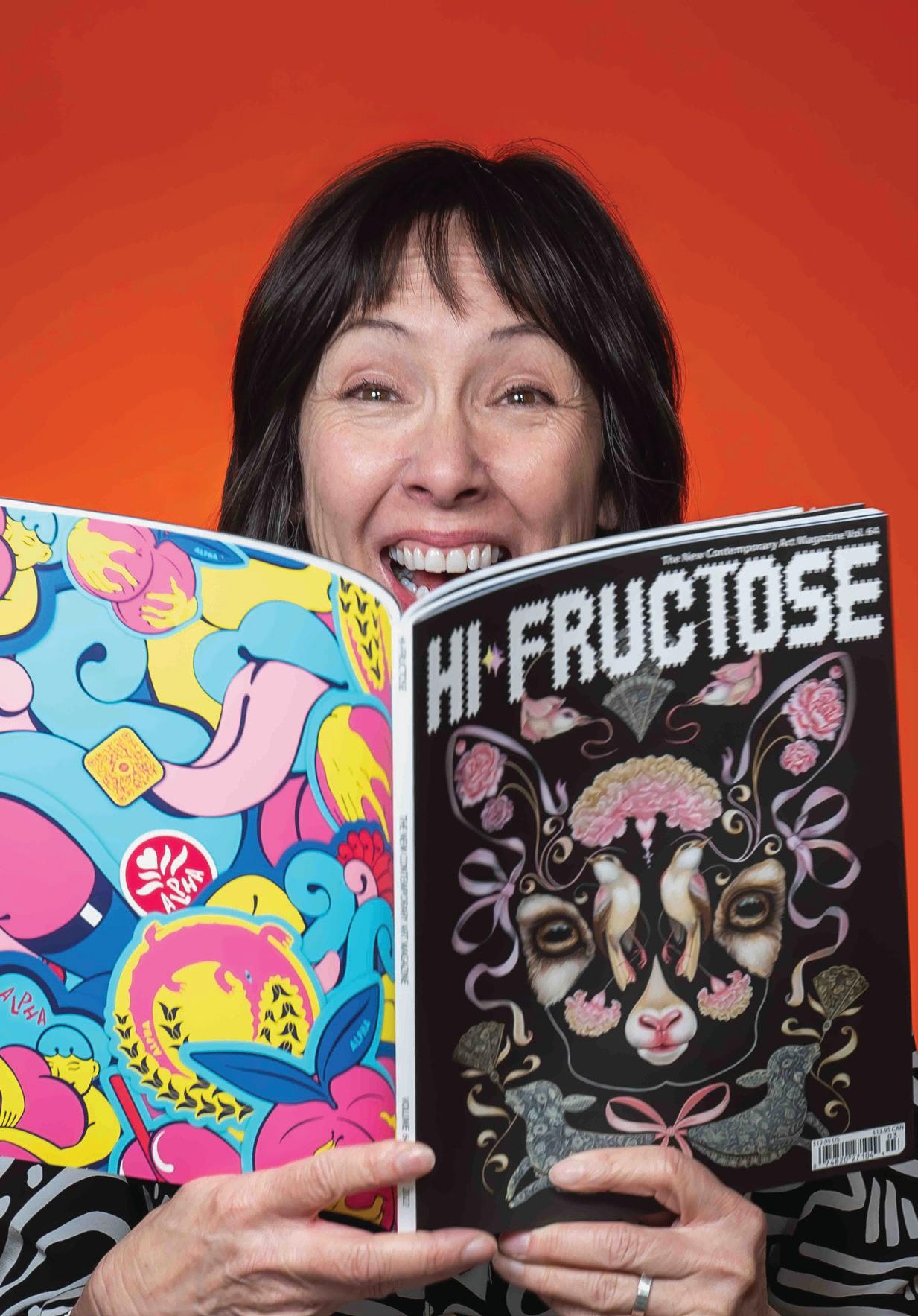
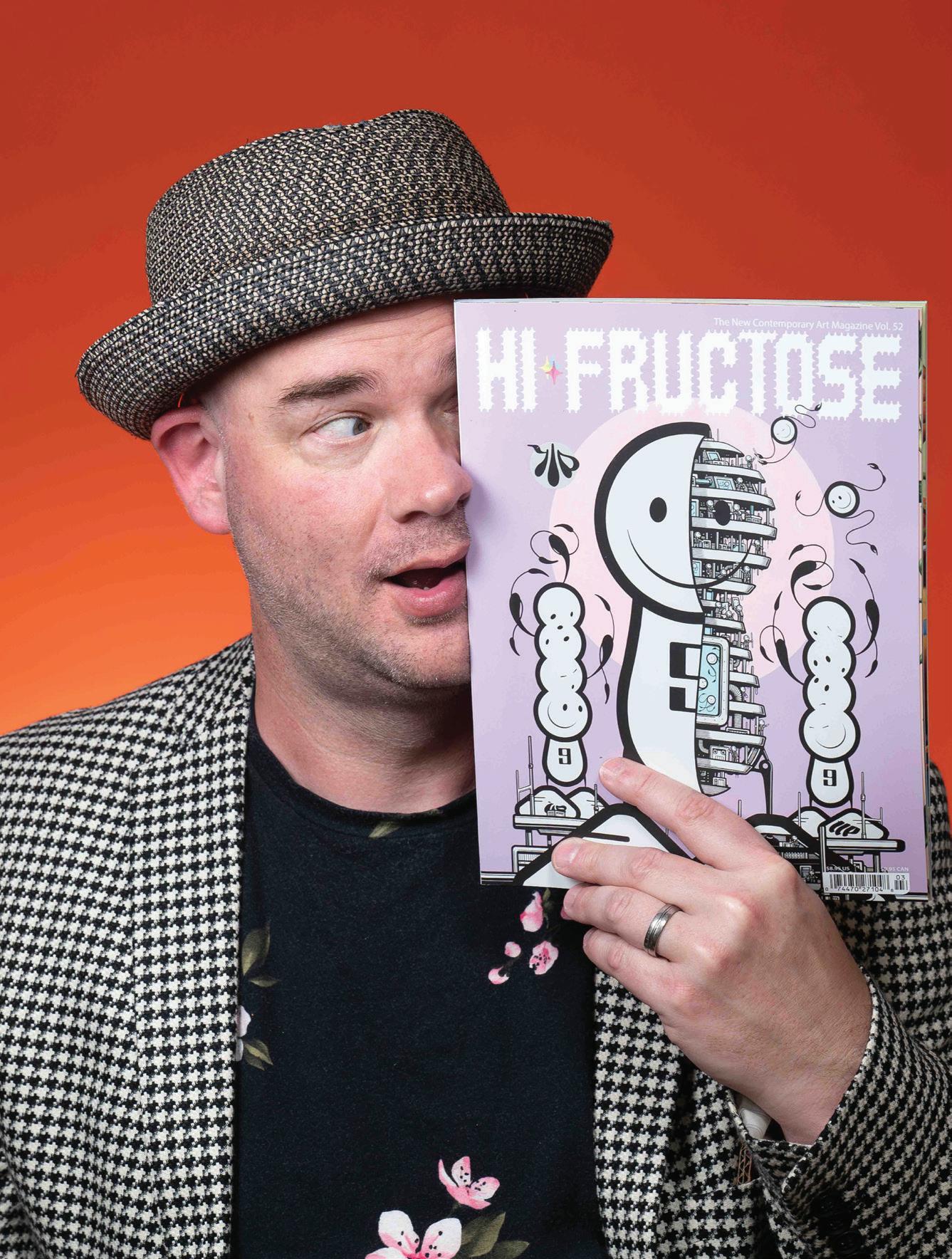 BY Janis Hashe
BY Janis Hashe
Somebody

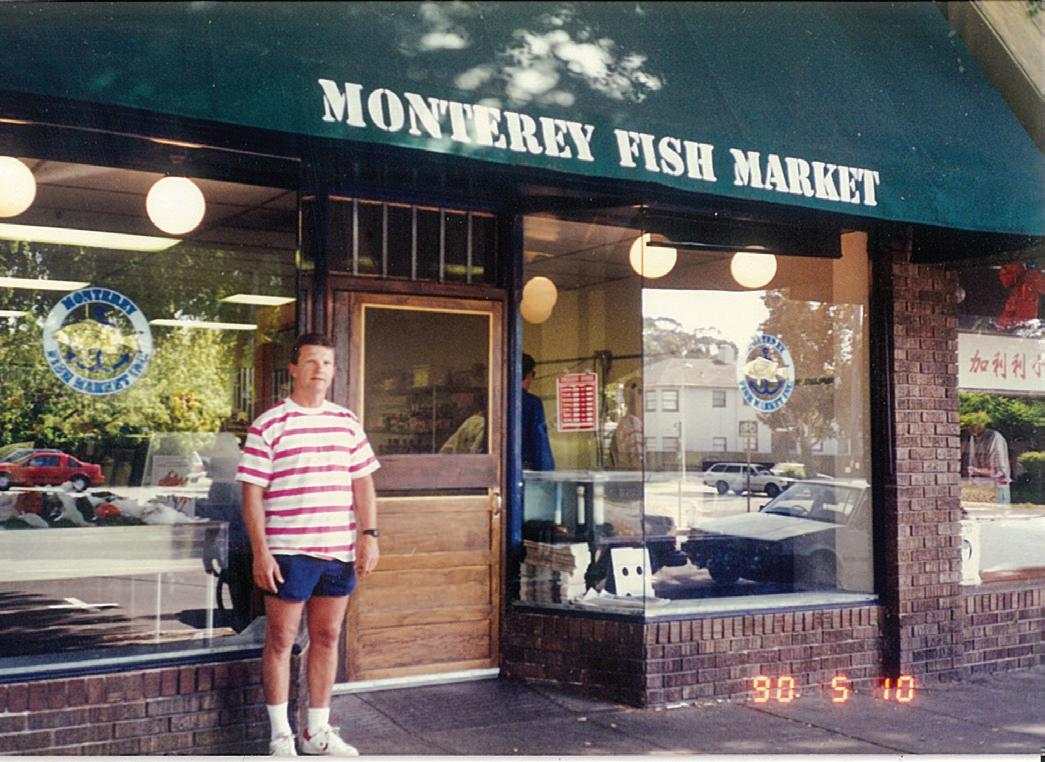





Bring a truck.
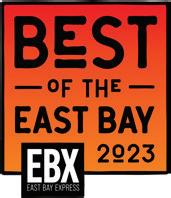




Annie’s intricate, precise, mysterious watercolors, which use only black paint, have long reflected her interior journey.

of a quiet street in East Richmond doesn’t shout, “Artists within!” But during the pandemic, there was an event that may have given the game away.
Married artists Daniel “Atta Boy” Seifert and Annie Owens discovered that a giant agave in their front yard was undergoing its massive end-of-life bloom. Dubbing it “Timothy,” they created flyers inviting neighbors to walk or drive by and enjoy Timothy’s final exuberance. “We were just getting through each day at the time,” said Atta. “This was a way of seeing your neighborhood in a new way.”
People loved it. “I would be weeding, and they would stop and ask if they could take a selfie,” said Annie.
In some ways, the Timothy event says a lot about where both Atta and Annie are in their very individual art experiences. “In recent years, my art has become a form of therapy, especially after we had a serious car accident in 2021,” said Atta. “Very little is planned, and nothing is measured. I think art and play can be revolutionary for everyone; it can change the way »


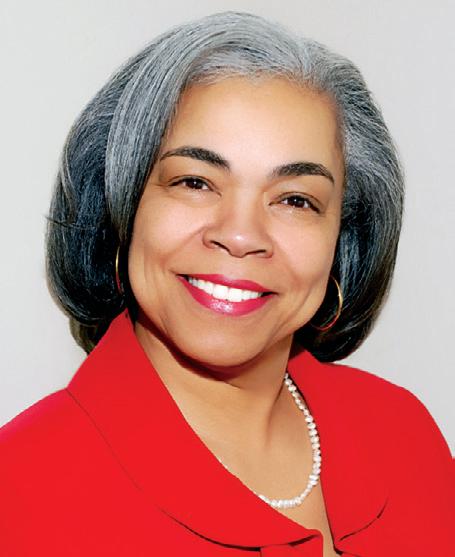

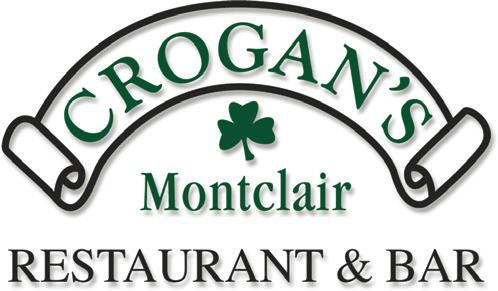












Atta’s work continues to draw attention and o ers of collaboration from multiple places.



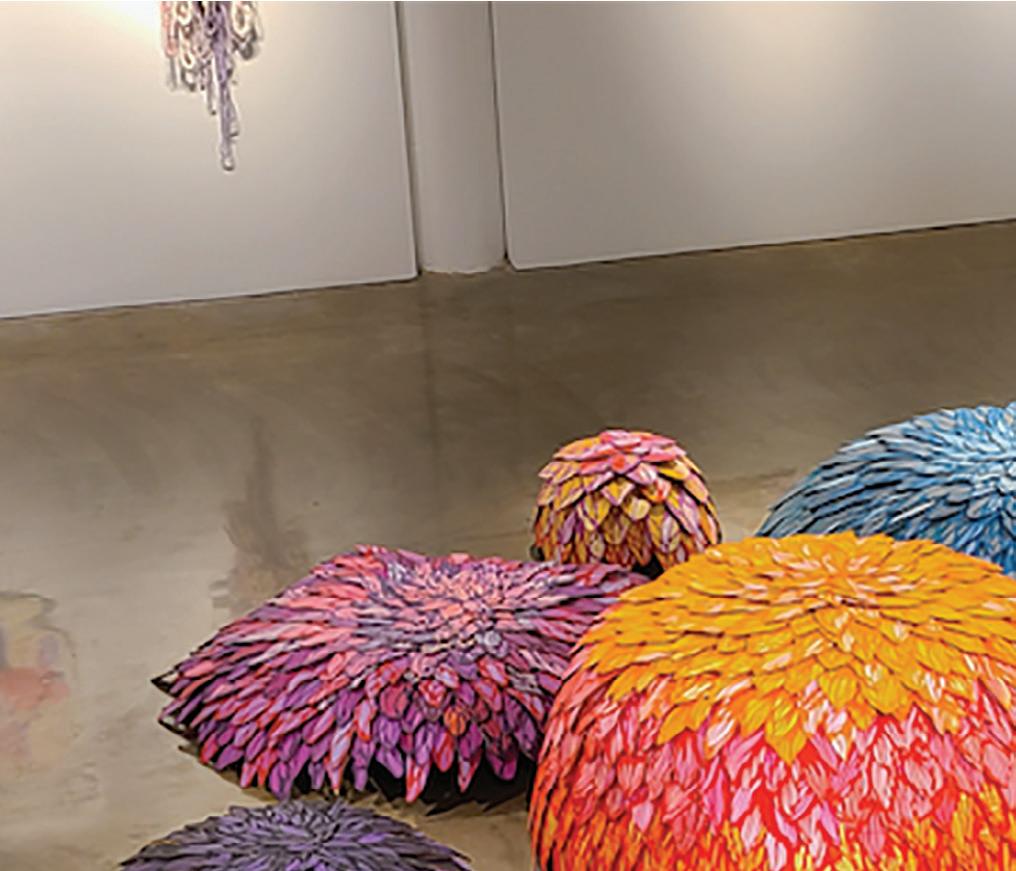
that you respond to the world and how you operate in it.
“I seek to make work that inspires a sense of wonder, perhaps alters the narrative of one’s day and speaks to the possibility of possibilities…But most importantly, it gets me to the next day. In the end, even the art in the Louvre will burn up in the sun, no?” he added.
Although continuing to paint, Atta’s current focus is on sculptures created from recycled cardboard. A museum installation version of “The Upcycled Garden,” his vividly colored cardboard celebration of natural forms that was first seen at Oakland’s UMA Gallery, will be installed in St. Louis’ The City Museum in February. This version of “The Upcycled Garden” will combine both existing installations, and add larger works as well, using the recycling output of the institution.

Annie’s intricate, precise, mysterious watercolors, which use only black paint, have long reflected her interior journey, as well as her love of horror movies and ghost stories. “I never set out to illustrate my sense of isolation, displacement, or my thoughts and feelings, but stepping back, I can see that’s what came out,” she said.
»

Staying Power
Women Artists

Forging Through the Decades
Aug 17 - Sept 23
Artists' Reception

Saturday Sept 9th 5-8pm
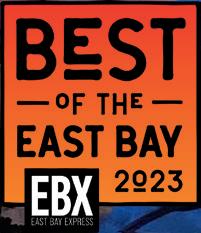
The Freshest Art is Locally Grown!
SHOH GALLERY

700 Gilman Berkeley
SHOHGallery com

• Connected community
• Rigorous academics
• Faith-based character development
• Low student-to-teacher ratio
• Focus on social-emotional growth
Admission Events:
Info Nights: Nov. 8 & Jan. 10 Open House: Jan 28 School Tours Available
RSVP: www.spnalameda.org/admissions 1335 High St., Alameda | 510-521-0787 | www.spnalameda.org
Dine in Sonoma Wine Country’s most spectacular vineyard setting.

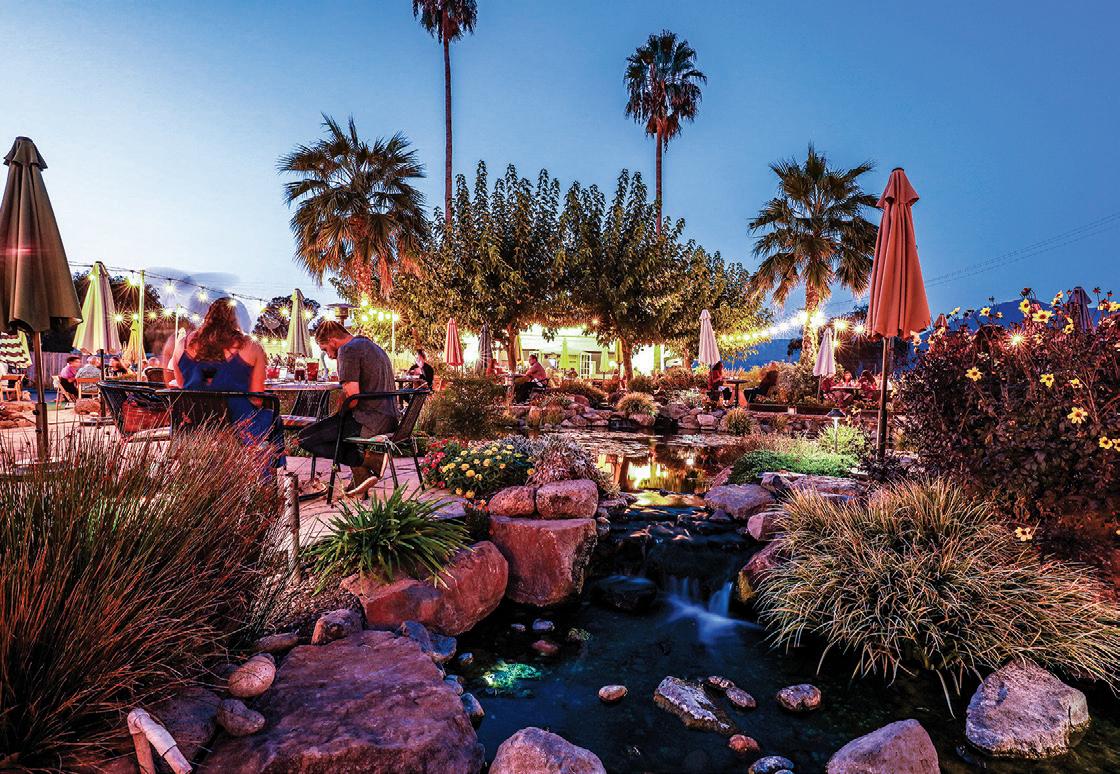
LUNCH, DINNER & WEEKEND BRUNCH
9900 Sonoma Highway (CA12) Kenwood | 707.833.6326
saltstonekenwood.com

But now, “I’m ready to move on. I’m over swimming in Lake Me.”
“Lake Me” is, in fact, the title of one of the works that will be part of her solo show, opening Sept. 9 at Portland’s Brassworks Gallery. “I’m hoping with this show, the first in many years, to put the old themes of angst mostly behind me because, at this point, I’ve sorted most of that out,” she said.
Part of that sorting out happened as she built a self-described “little black witch house” on 17 remote acres in upstate California. When she sold it, she signed the underside of the porch.
Besides individual work, the two have a now-famous joint project. In October, Philadelphia’s Arch Enemy Arts will house an invitational exhibition of many of the artists who have appeared in HiFructose magazine, launched by Atta and Annie in 2005, which has since become a sought-after art world publication.
Hi-Fructose “started as a dare while we were dating,” said Atta. “It was a bonkers thing to do, especially at a time when everyone was chanting ‘Print is dead,’” said Annie. The couple had been using the phrase, “New Contemporary Art,” for years, “which was just redundant and absurd enough to make a perfect blanket term for what we like to cover,” said Atta.
They were also motivated by not finding what they wanted to see in other art publications. “We used to go to bookstores, browse art magazines and come away with the sense that, in print, the focus was on either ‘blue chip art’ or ‘street art’ and not much else,” said Annie. “There was so much to be mined, and room for a new magazine that could embrace street art, blue chip, comic art, album cover art, artists you’ve never heard of next to legends...you name it, all in one place.”
Eighteen years later, Hi-Fructose has both an American and a European edition,

is collected by its readers (“like National Geographic,” said Atta) and continues to defy classic marketing models. It’s still edited and put together primarily in the couple’s garage, which is also home to a vintage clothing rack, and a few stray upcycled “trees.”
It’s print-only, there are no advertorials, and “each issue is sort of a conversation between Annie and me, curation wise. We battle it out, lobbying for different artists that either of us are inspired by or honestly often jealous of,” Atta said.
The Summer 2023 issue, for example, features art and artists ranging from the charming toy-like sculptures of Lesley Barnes and Ross McAuley, to
the pioneering Afrofuturism of the late Rammellzee, to the hundreds of thousands of paintings by Brooklyn artist Steve Keene. “By now, we’ve learned that thinking differently from one another is a benefit rather than a challenge,” said Annie. “Most of the time, though, we’re thinking the exact same thing.”
Then there’s Game of Shrooms. Now an “international underground holiday,” held in June each year, it began in 2019 as a way for Atta to cope with depression. Recalling the mushroom ceramic pieces his grandmother created, he began hiding mushroom sculptures in public spaces, then challenging “hunters” on social media to find (and keep) them. The
I have been a financial professional for close to 40 years and have been focusing exclusively on reverse mortgages for 18 years. I am a Certified Public Accountant and take pride in providing professional, honest, and ethical advice. If you would like a free customized quote and information package on reverse mortgages, please contact me, and I will respond immediately with no sales pressure. I believe in providing concise information, so you can make an informed decision. My financial background helps me explain reverse mortgages in easy to understand terms.







idea literally mushroomed.
It’s now celebrated around the world. “This year, one was hidden and found at the actual South Pole!” said Atta. “Tens of thousands of art works have been shared with others in a commercial-free, extreme gift-giving way.” Annie helped formulate some of the game’s “Leave No Trace” rules, including “You don’t need to be destructive to be subversive.”
“The participants seem to really get it,” he said.
Atta’s work continues to draw attention and o ers of collaboration from multiple places. Pre-pandemic, he
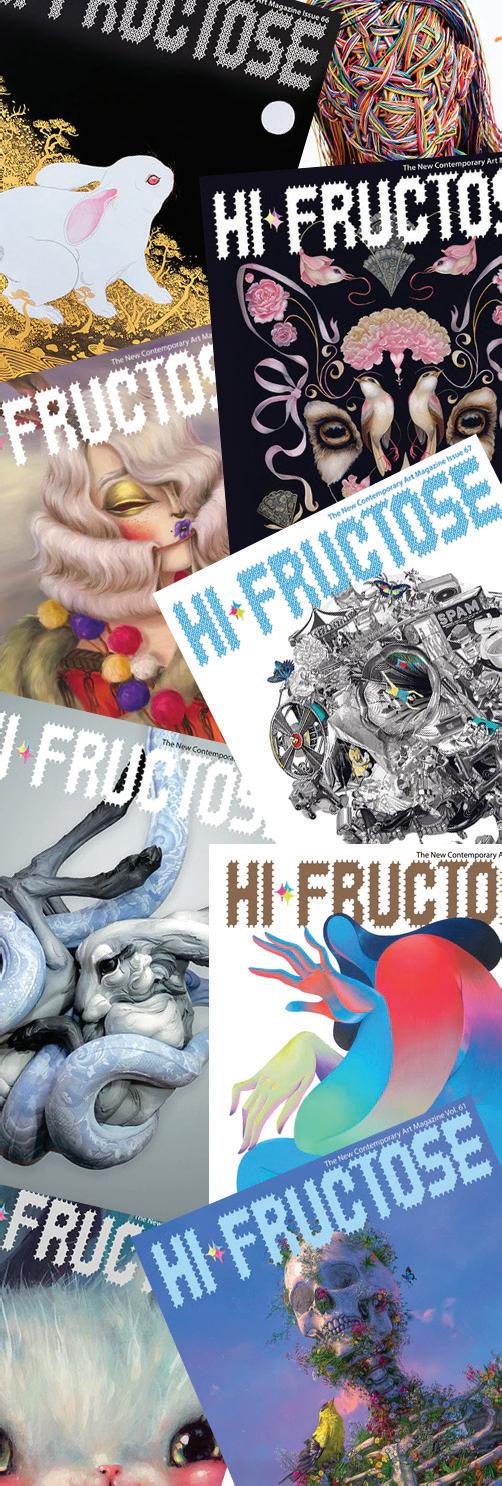
and Annie traveled to Santa Fe to see the original Meow Wolf installation, “The House of Eternal Return.”
“We were skeptical about what they were doing initially, because of the fly-by-night ‘selfie museums’ that were proliferating at the time,” said Atta. But they were both entranced by the “mapless portals” of the building, and were given a tour of the factory space by one of Meow Wolf’s founders, the late Matt King, and director of artist collaboration Han Santana-Sayles.
“When I had a few ‘Garden’ installations under my belt, I sent a shout to Han,” said Atta. This resulted in a well-attended
workshop at Meow Wolf’s Las Vegas installation, “Omega Mart,” with kids and artists using recycling materials from “Omega Mart.” He recalled, “The artists who helped me make a few pieces signed them with me.” Those pieces are now on display at Las Vegas’ Sahara West library, along with the original “Upcycled Garden.”
It’s impossible to know when, in the house on a quiet corner in East Richmond, which is filled with art made by other people, the next creative impulse or bonkers idea will emerge. The only certain thing is that it will—and then fantastically flower. ❤
I think art and play can be revolutionary for everyone; it can change the way that you respond to the world and how you operate in it. I seek to make work that inspires a sense of wonder, perhaps alters the narrative of one’s day and speaks to the possibility of possibilities…But most importantly, it gets me to the next day.
— DANIEL ‘ATTA BOY’ SEIFERT








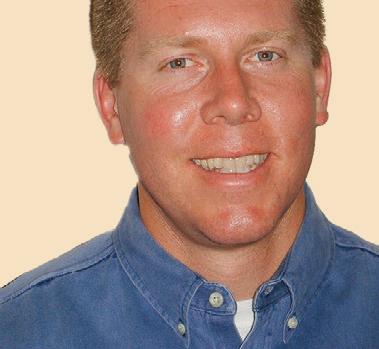

 BY Janis Hashe
BY Janis Hashe
Way back in the day, before everyone was hunched over their phones on Bay Area Rapid Transit (BART), it was common to see people reading newspapers, magazines and— it’s true—books.
In line with its message of carrying people not just to work or the airport, but to a myriad of cultural centers around the Bay Area, BART has launched a book club for riders called “One Book, One BART.”
The idea for the book club was first broached by Dave Martindale, BART’s director of marketing and research, said Michelle Robertson, who described her own BART position as “storyteller.”
Met with BART internal enthusiasm, the book club concept was handed for development to Robertson, whose master’s degree in English lit made her a natural choice. Using other book clubs around the country as models, Robertson “designed the club from the ground up,” she said. “One Book, One BART” was created to engage both riders and BART employees.
Book choices, it was decided, should ideally be both set in the Bay Area and by Bay Area authors. The first pick was an easy one, said Robertson: Hua Hsu’s Stay True: A Memoir. The author, a staff writer for The New Yorker, set his multi-awardwinning book in 1990s Berkeley. BART employees chose Stay True even before its selection as the 2023 Pulitzer Prize winner for memoir, said Robertson.
In a post written for bart.gov, Hsu commented, “I have fond memories of taking BART for a summer job in Berkeley back when I was in high school … I stared at the map, memorizing the names of all the cities and stops between Fremont and Berkeley … when I attended college at Berkeley, BART was
how I got to San Francisco for record shops (24th St. Mission) and concerts (Montgomery St.), Halloween parties (16th St. Mission) and summer jobs; the simple thrill of being able to eat burritos in a different area code.”
The New York Times described Hsu’s Stay True in this way: “To say that this book is about grief or coming-of-age doesn’t quite do it justice; nor is it mainly about being Asian American, even though there are glimmers of that too … This is a memoir that gathers power through accretion— all those moments and gestures that constitute experience, the bits and pieces that coalesce into a life.”
Next, when creating the BART book club, Robertson reached out to local independent bookstores, and found them enthusiastic partners. Seven signed up: Moe’s Books and Revolution Books in Berkeley, Reasonable Books in Lafayette, Orinda Books in Orinda, Banter Bookshop in Fremont, Folio Books in San Francisco’s Mission District and Books on B (online, since its Hayward storefront was temporarily closed).
“All the bookstores had to be within a mile of a BART station,” Robertson explained. Each one offered a 20% discount for Stay True on presentation of a BART ticket, Clipper card or mobile Clipper card.
“One Book, One BART” launched on May 17 at the Oakland Rockridge station.
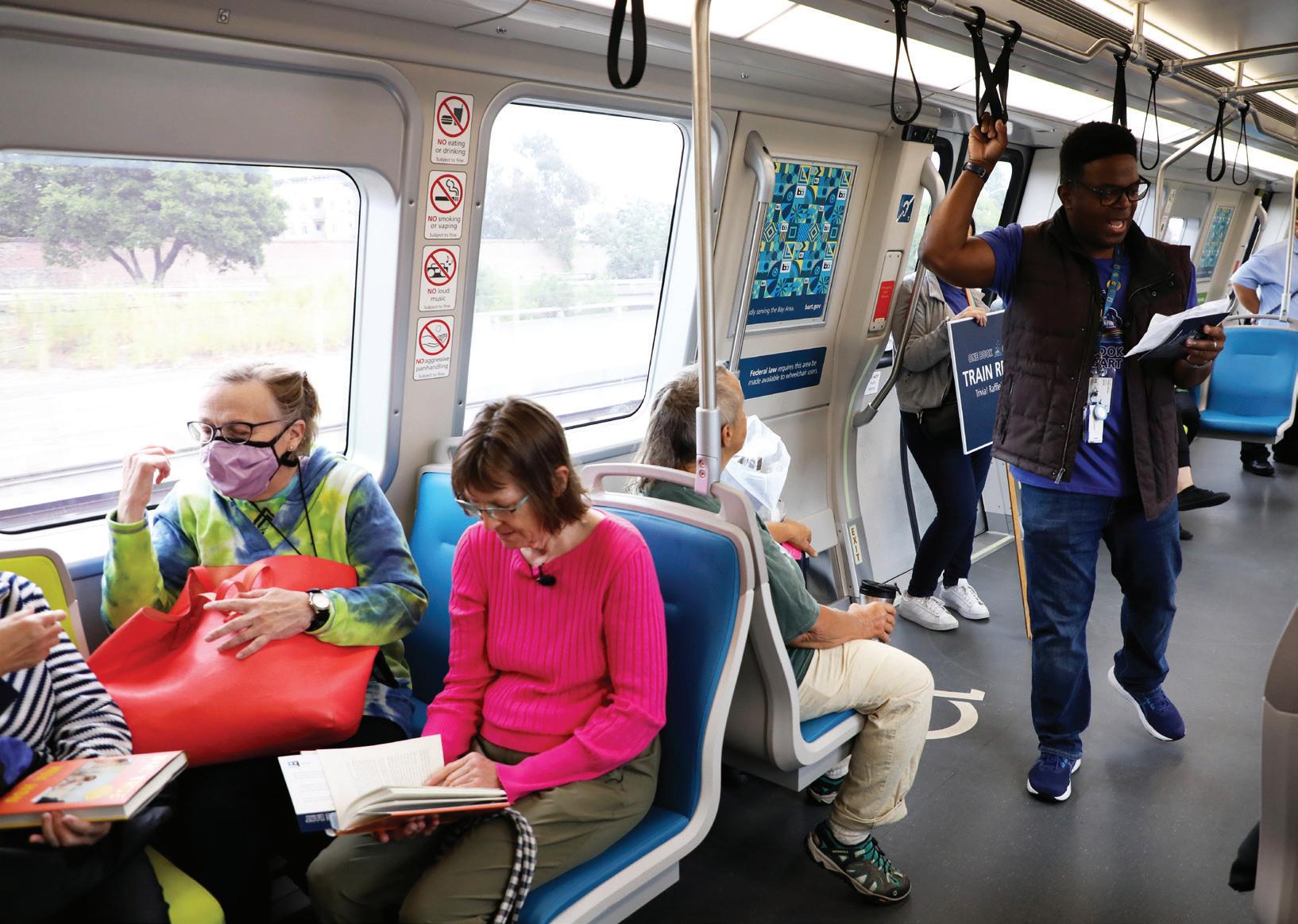
Attendees could win free copies of Stay True, and Revolution Books, which appears in the memoir, had a table selling copies of the book.
“I am always looking to see what books people are reading when they ride BART,” said Revolution events coordinator Reiko Redmonde, “and I thought it would be fun to hold a book club on the train. Also, a few people on the staff had read and liked Stay True, which mentions our bookstore.”
The partnership helped promote the store. “A man who came [in] was happy to find our bookstore for the first time, as well as the book,” she said.
Then came the first “Train Read-in,” on June 17, designed to “test the waters,” said Robertson. Starting at the Rockridge station, the event traveled through three more Oakland stops, under the bay and through seven San Francisco stops, ending at Glen Park.
Readers gathered at the station, boarded the first train, and besides discussing the book, participated in a trivia contest and a raffle. “This route gives you gorgeous views of the city. And the Yellow Line is very busy,” said Robertson. “It was a diverse, eager group of people, many of whom exchanged names and emails to stay in touch.” One participant noted it was the most socializing they’d done since the pandemic started.
Redmonde agreed, saying, “[It was] a
very cool meet-up with people who were, in at least one small way, kindred souls.”
Book club-connected activities continued into the summer, with a free virtual author’s talk with Hua Hsu, moderated by Jeff Chang, held on Aug. 2. The “One Book, One BART” page, bart.gov/bartable, features guided reading questions, contests and further information about the club. BART employees formed their own informal reading groups, meeting at lunchtime to discuss Stay True
Robertson emphasized that the book club was one of BART’s several literature-inspired events, including the first short-story writing contest for writers, “BART Lines.” The four winning stories were distributed in selected BART stations, including Downtown Berkeley and Oakland’s Fruitvale. This fall will see a poetry contest for local youth poets, she said.
The success of the book club’s first iteration means it will continue into fall and winter 2023, with a new book selection to be announced shortly. Robertson expects there will be at least two Train Read-ins, on different routes, and again, many related promotions and events. Revolution Books will likely stay a partner. “We hope to continue to participate, in the course of building a movement for real revolution,” said Redmonde.
“In launching ‘One Book, One BART,’ we’re continuing to honor the long tradition of reading books on BART, while celebrating the literary ecosystem in the Bay Area,” said Robertson, “from our region’s trove of independent bookstores to our incredible libraries, to our made-in-the-Bay writers, poets and literary scholars.”
More information about future ‘One Book, One BART’ events will also appear on BARTable’s social media channels, including Instagram, X (formerly known as Twitter) and Facebook. For more information about the upcoming youth poets’ contest, visit bart.gov/news for updates.
French-American-International
Now accepting applications for the 2024-25 school year!
Ecole Bilingue de Berkeley is a preschool-8th grade bilingual immersion school where students learn in French and English.


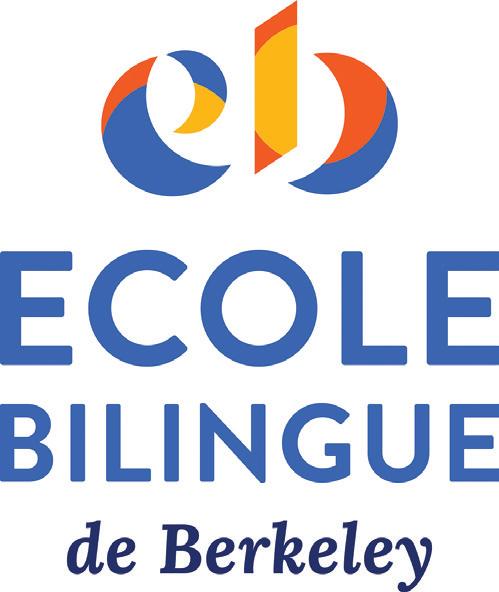
We believe that when students see the world without borders or barriers, they can confidently and capably seize any opportunity. Every day our students learn to speak, write, and think in two languages, becoming open-minded, adaptable learners who discover their best selves while respecting the differences of others.
We have several entry points and enroll new students with or without French knowledge in

• Preschool
• Kindergarten
• Grade 1 & 2 Accelerated French Program
• Grade 6 International track
At Ecole Bilingue, we not only teach French and American standards, but we also empower our students to value and respect diverse perspectives. We encourage them to be passionate readers, avid learners, articulate speakers, and critical thinkers. We give them the opportunity to discover, explore, create, and
challenge ideas throughout their journey from preschool to middle school. Our students benefit from a whole child approach where all adults strive to embody our core values of Unity, Reflection, Integrity, Zeal and Endeavor. Our school’s purposeful and meaningful inclusion is core to our mission in that it enhances the educational experiences and outcomes for all students, staff, and families. We can’t wait for you to discover our bilingue programs or International Middle School. Learn more and schedule your visit now!

 BY Janis Hashe
BY Janis Hashe
The term “neurodivergent” encompasses autism, ADD/ ADHD, non-verbal learning disorder (NLD), sensory processing disorder and other brain di erences. Parents of neurodivergent children are always looking for a welcoming and supportive educational environment for their kids. Fortunately, the East Bay o ers a number of schools that foster that environment. The following are a few of them.
as “twice exceptional”—they were both gifted and neurodivergent—known as “2e” in the growing community of parents of kids with similar assessments. “Dr. Hayes struggled to find appropriate support that focused on strengths, not deficits,” said Rianna Bensing, executive director of the school Hayes founded in 2015, Big Minds Unschool.
Big Minds was first a “lab school” in Hayes’ home. With increasing success and parental inquiries, it moved to a building in Pinole. A second campus eventually opened in Pleasanton, with both serving students in grades K-8. The Big Minds’ founding statement is: “Students deserve a school that meets them where they are.”
The admission process is careful, said Bensing, ensuring school and student are the right fit. “We ask, ‘What has your student struggled with? What are they strong in?’” An intake appointment and first walk-through are followed by Big Minds sta meeting the child, then by a shadow week at the school. If this is successful, a 90-day enrollment follows, with baseline assessments, before the student is fully enrolled for a whole year.
Big Minds has a flexible start time, small class sizes and a “focus on what students are passionate about,” from art to computer science, said Bensing. “We teach them to know what their disability is, how to mitigate it, but also how to be
»











Sacred Heart Cathedral’s story is one of innovation and purpose, of serving Bay Area youth since 1852. Today, we continue to welcome the Bay Area’s brightest students to our inclusive community, preparing them for success with a dynamic curriculum, integrated technology and engagement with dedicated and innovative teachers.
Students and their families choose SHC for the strength of our academics, our faith and values, our extensive array of cocurricular opportunities and the warmth of our inclusive and nurturing community. Our students are compassionate, motivated, resourceful, independent, serviceoriented leaders who give life to our motto, Enter to Learn, Leave to Serve.
self-advocates,” she continued. Parents are supported with once-a-month Zoom meetings, parents’ information nights on current research and ongoing family consultations. “Our kids are not less than,” she noted.
Big Minds Unschool, 510-630-2541, bigmindsunschool.org.
The two campuses of The Berkeley School don’t educate only neurodivergent students. But head of school Mitch Bostian, himself the parent of a neurodivergent child, emphasized that small class sizes, strong assessment
practices and focus on “identifying” as opposed to “labeling,” can make the school a good choice for some pre-K-to-middleschool kids.
“We want to know everything about your child you want to tell us,” Bostian said. Post-application, a visit is arranged with parents, student and the student engagement team, which includes academic learning specialists, social/emotional learning specialists, an executive functioning coach and a counselor. This leads to a decision about school and student fit.
The school began as a Montessori school. “Maria Montessori taught children deemed ‘uneducationable’ by the Italian government,” said Bostian. Though it retains some basics of Montessori’s system, such as “follow the child,” it also incorporates brain-based science that has emerged since her time.
Bostian gave a composite example of a student success story. “A student at the early childhood education campus comes in with an autism diagnosis. They start with a classroom aide, and a strong partnership is formed,” he said. Eventually, in future grades, the aide becomes unnecessary, and the student goes on to do well in high school and beyond.
The Berkeley School students learn to talk about their neurodiversity. “Agency is an antidote to shame,” said Bostian. “The fact that these pathways exist at our school says something about how we operationalize our intentions.”

The Berkeley School, Early Education Campus 510-849-8340, K-8 Campus 510-665-8800, theberkeleyschool.org.
Early in the ’90s, Dr. Kathryn Stewart realized that adolescents with NLD and autism needed a more comprehensive program than the weekly outpatient treatment she was providing. The need for an educational program for


Shu Ren International School proudly offers both a Chinese Mandarin immersion education and the International Baccalaureate (IB) World School’s IB Primary Years Programme (PYP) for children aged 3 - 12. We create an enriching and engaging environment that centers on three critical components: Inquiry-based learning; multilingual and multicultural education; and development of the whole child. Guided by native Chinese educators, students discover their strengths, explore new concepts, and develop strong academic skills. At Shu Ren, students excel as academic achievers in a complex, rich world of international culture and communication.


ids Speaking Spanish (KSS) offers a full-time Spanish immersion program for children, two–six. For more than 20 years, our responsive learning environment supports language immersion, encourages self-direction, empowers children to conquer challenges with creative solutions, and strengthens critical thinking skills and social connections. KSS students flourish under the care of highly-experienced Maestras from Spanish-speaking countries. Their guidance nurtures the vital skills children need to overcome obstacles with resilience and determination, and grow into confident, compassionate leaders, and forward-thinking individuals shaping the world of tomorrow. 1.877.442.2555
bright, academically gifted kids with neurocognitive disorders was obvious.
Eventually, Stewart was able to partner with funders. Orion Academy opened in September 2000. The maximum 60-student high school’s admission procedure requires that students have a current assessment. When parents contact the school, “We first ask, ‘Why Orion?’” said Stewart. Once the application is submitted, parent and student are invited for a private visit, then a half-day shadow visit, before a final determination about fit.
Orion offers college-prep classes, social skills groups and required “panel projects,” in which students set a goal, create a project, then present it several times a year to the whole school, including taking questions. “We don’t do ‘special-ed’ grading,” Stewart said.
The school’s parent network is often used in finding internships for students, which have included those at NASA and Cal, as well as in law offices and theater arts programs. Required parent community meetings facilitate networking, and the school has a Parent/ Teacher Organization (PTO) that creates events and supports ongoing programs.

“Our parents are often as stressed as their kids. The PTO is like-minded individuals who help each other,” Stewart said.
An example of student success was a boy who came to Orion after an incident at a public school that would usually have disqualified him from admission. But on hearing the circumstances, and meeting the student, Stewart accepted him. “He was a great kid. This was a provoked, isolated incident. He’s gone on to graduate from UC, and is doing graduate work at Stanford,” she said.
Orion Academy, 925-377-0789, orionacademy.org.
Each day at Outside School develops by itself. Master teacher Heather Taylor founded Outside School after working as a preschool, then elementary school teacher, acquiring experience with the “forest school” philosophy. She believes outside learning can give some neurodivergent children, especially those with high-functioning autism,
ADHD or sensory processing disorder, a “better foundation, one not too loud, not artificially lit, with too many distractions.”
Her materials state: “I find out what my students’ needs are, meet them there, and teach to what they need the most, whether that’s any combination in terms of their sociaI, cognitive, or physical development, and constantly change to address new things that come up.” Parent, teacher and child operate as a team.
Outside School serves kids in grades K-12, with a variety of options, including the regular Tuesday-Thursday 9am–3pm classes, summer camps and alternatives for kids who can only attend one day a week, or one month only. Class size is a maximum of eight. Everyone meets in the parking lot of Richmond’s Alvarado Park. Hiking and playing lasts until 10am, and then there’s snack/storybook time. The kids observe the abundant wildlife of the park. Adventuring continues until lunch at noon, with more stories, and, for the older kids, journaling.
“If a child wants to run far and fast, they can. If they want to hide and camouflage for an hour, there’s space for that,” Taylor
said. Neurodiverse kids find the time to make friends. Opportunities exist to enroll students partway through each course, and Taylor allows a trial period to see if Outside School is a fit.
Outside School, teachoutside.org/ outside-school.
Oakland’s Spectrum Center serves students in grades K-12 with a referral from a public school district. Students must already have an Individualized Educational Plan (IEP). Spectrum materials state:
“Our classrooms are tailored to individualized needs and ensure independence in academic, behavioral, communication, therapeutic and transition services…our comprehensive add-on services offerings including autism services, behavior support services and transition services, [and] an enhanced educational program.”
Spectrum Center, 510-729-6384, spectrumschools.com/location/camden.


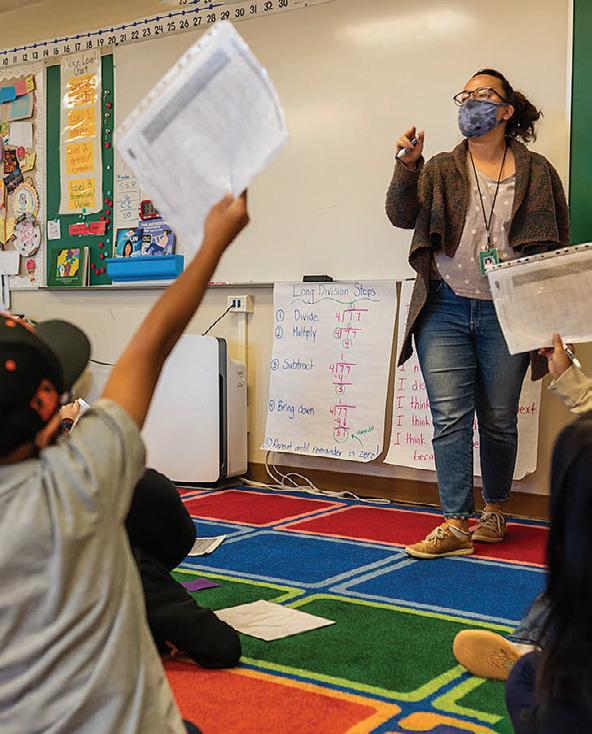

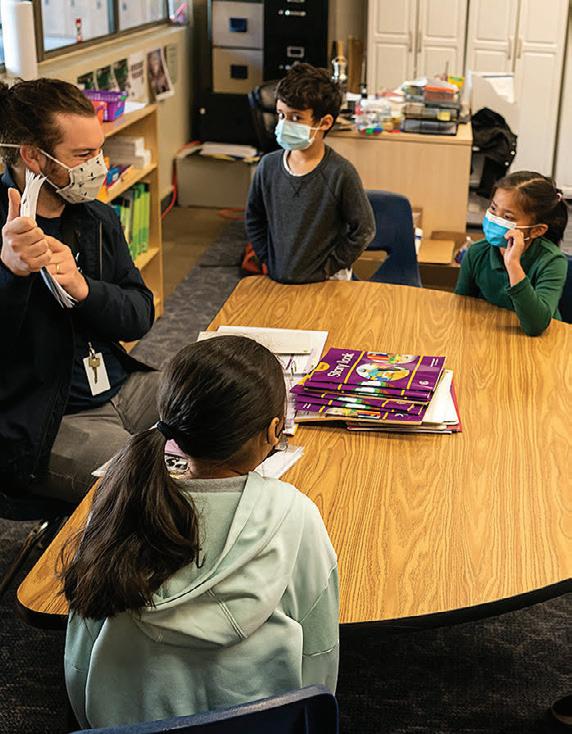
The Academy of Alameda K-8 Public Charter School envisions a future where all students are successful, and their destinies are not determined by their demographics. Since its inception, The Academy of Alameda has had social justice as a core foundation of its mission. The Academy’s mission is to “equitably develop students into critical thinkers and life-long learners who navigate the world with integrity and who apply their learning to empower themselves and their communities.” demographics. As one of the most diverse schools in California, we embrace and honor what is unique about our students through our K-5 equity studies program and our 6-8 competency-based learning model. Our full-day kindergarten and free to low-cost afterschool K-8 programs help support working families. We will also be adding a transitional kindergarten program in Fall 2024.

Bentley School is an intellectually curious and inclusive community where teachers embrace the strengths of every student to help them rise to their full potential. In a challenging academic environment, we meet students where they are, encouraging them to cultivate their unique talents, skills, and perspectives. At Bentley, we foster a culture where students support and bring out the best in each other. And we prepare every individual for success throughout their lives by balancing intellectual achievement, personal growth, and self-advocacy. bentleyschool.org

The new Bioneers learning platform offers a ray of hope and strength for activists and anyone concerned about the state of the physical and political environment and culture’s ability to deal.
In the spring of 2023, the global change-makers conference Bioneers made its new home in the East Bay. Having been held at the once state-of-the-art now retro-futurist Marin Fairgrounds for decades, the conference found a new and ready audience in Berkeley, where it was held at the David Brower Center, the University of California and other nearby sites. The proximity to the university and a younger, more diverse pool of participants has revitalized the Bioneers institution.






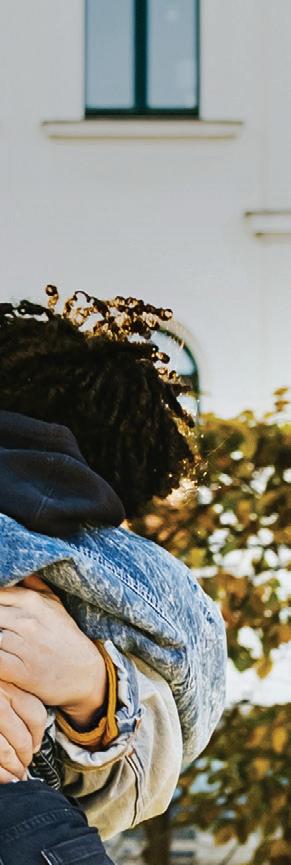

“In many ways, this region has long been one of the hotbeds of progressive activism and movement building in the entire country,” said Teo Grossman, senior director of programs and research producer, Bioneers Radio. The move was a natural fit. “The vibrant community of progressive nonprofits, businesses and movement organizations that call the East Bay home have long been such a core part of Bioneers,” Grossman continued.
So often with a conference designed to have an impact, the buzz of the events carries forward for days and even weeks, but then it dies down.
“People come to Bioneers to connect, learn and get inspired,” said Grossman. “We frequently hear from folks who leave the event and ask, ‘So what now?’”
There is always a conversation among organizers: How do we maintain this momentum throughout the year? The response of Bioneers is Bioneers Learning, an online learning platform with liveZoom and asynchronous options.
“We hope that Bioneers Learning fills that need, providing a way to stay engaged, dig deeper and take action on the issues, topics and movements that are so important in today's world,” said Grossman.
“The thrust of what we are doing with Bioneers Learning is to offer courses that cover the breadth and variety of everything that Bioneers is,” said Patience Kamau, program director for Bioneers Learning.
The courses, which run from four to six weeks, draw from past keynote lecturers
and presenters at Bioneers to design courses based on their expertise. While conference-favorite topics like systems thinking and spiritually rooted activism may seem impractical, the platform as a whole will emphasize practical topics.
“You can actually take permaculture so that you can have practical tools to go work on your yard or your garden,” said Kamou. “Our tagline is ‘education for action.’”
The “emotional work,” as Kamou puts it, is also practical. “Healed people heal the world, you know, which is the opposite of wounded people wound the world,” Kamou explained.
Using the platform will be a very familiar experience for anyone who has used Zoom and YouTube. Courses are organized around a series of uploaded asynchronous videos or live Zoom meetings which are recorded for replay.
The first series of courses will be of the “live Zoom” type, which will allow learners to connect on a conference call and meet directly with other participants through breakout groups and live comments. Those who miss those class sessions will have a chance to watch recordings of the 60–90 minute Zoom meetings uploaded to the platform’s virtual classroom the next day.
As the number of courses expand, some will release all the material at once, with pre-recorded video lessons so that “some people can go through a four-hour course in one sitting and other people might divide that in four weeks,” said Kamou.
– TEO GROSSMAN,The ease of the platform’s use lends itself to making even the harder to grasp “inner work” topics to be accessible in their practicality.
Take for example this framework from one of the first programs offered, “Sacred Activism,” taught by Deborah Eden Tull and Bioneers co-founder Nina Simons. In clicking through the video “lessons”' in very much like a YouTube queue, short written lessons can be clicked on to bring up specific topics from the class. Under a lesson for Week 1 of this course, one reads about “a restorative practice that cultivates conscious choice” called STOP:
S—Stop, simply pause.
T—Take a couple of conscious breaths and turn your attention within.
O—Observe what is arising in your body, feelings, and mind with curiosity and nonjudgment.
P—Proceed.
Although it’s an approach familiar to those with experience in meditation or emotional learning practices, rarely has it been put so succinctly and memorably. It’s an example of Bioneers Learning’s new effort to take the change-making momentum from a few powerful days in Berkeley to a year-round, life-centering community.
“Bioneers brought such incredible energy to downtown Berkeley earlier this year,” said Barbara Hillman, CEO and president of Visit Berkeley. “We look forward to supporting their 2024 encore and involving even more of the city next year.” ❤
We hope that Bioneers Learning fills that need [to maintain momentum of the annual conference], providing a way to stay engaged, dig deeper and take action on the issues, topics and movements that are so important in today’s world.
Senior Director of Programs and Research Producer, Bioneers Radio









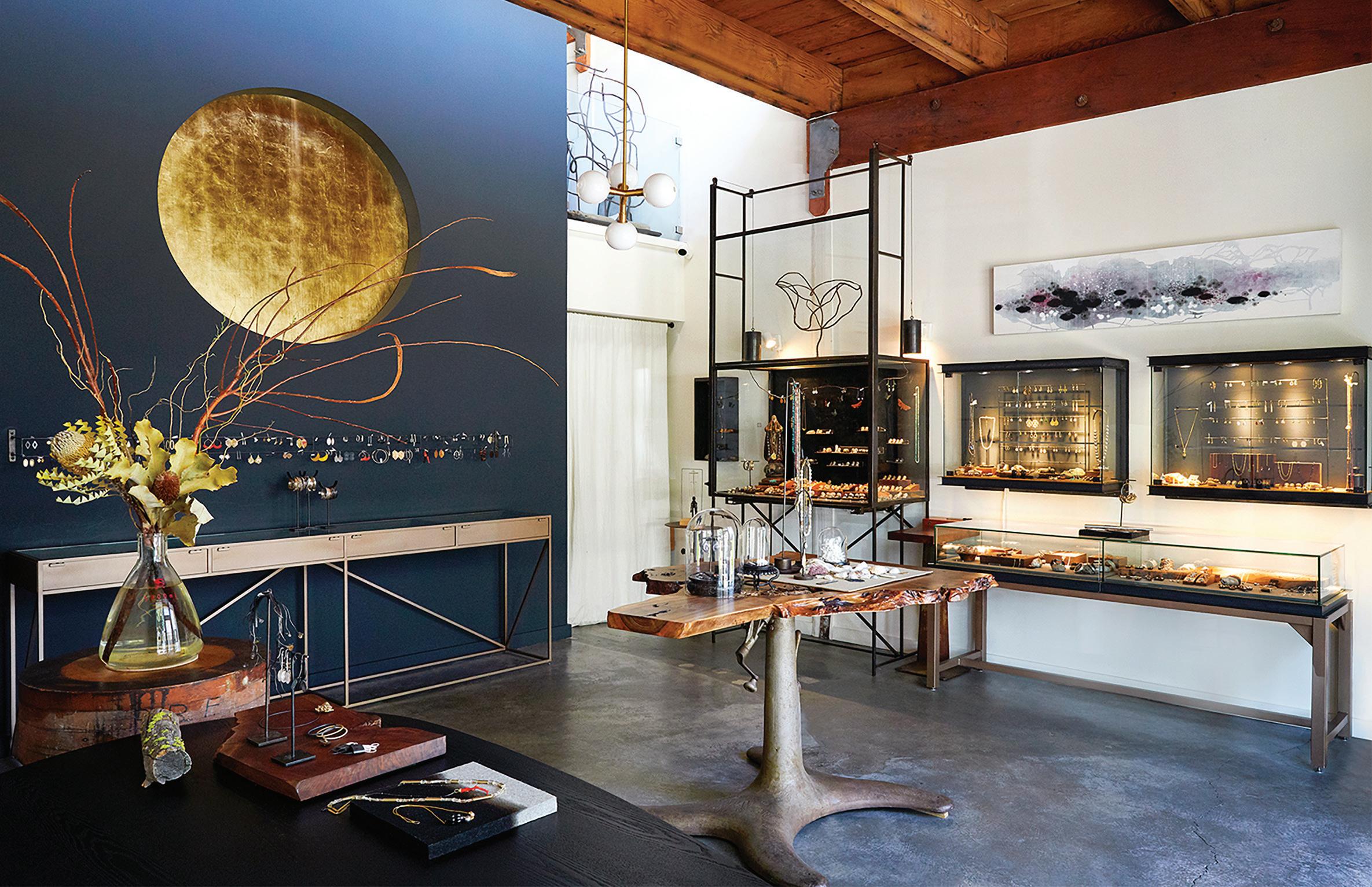 BY Lou Fancher
BY Lou Fancher
Shibumi Gallery founder April Higashi began designing contemporary jewelry through an experiential background steeped in textiles, fashion and fine art. Working in the fashion industry for Nine Bambini and Esprit de Corps taught her the ropes of running a business and clarified her budding entrepreneurial vision. Taking a jewelry-making class at San Francisco City College at age 25 eventually led Higashi to launching her hand-crafted jewelry line on the market—accumulating 300 accounts before ultimately closing the business.
Along the way, she honed her management capabilities as an art director with Jerry Garcia Estate, acquired newfound enameling skills under the mentorship of June Schwarcz and strengthened her artistic voice while working with Susan Cummins at Cummins’ Mill Valley gallery.
In 2005, Higashi opened her own gallery that showcases not only the contemporary wearable art she creates, but today represents the work of local,

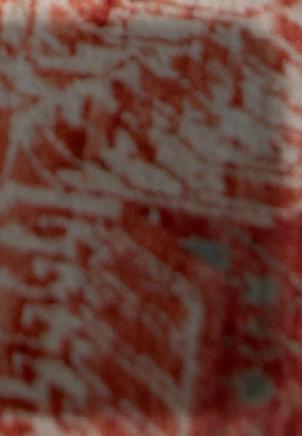

And for almost 40 years, The Cooperative Cleaning Company has met this need for the East Bay and Southern Marin Counties’ most discerning clients. CCC delivers exceptional service with a highly reliable, steady staff of professionals whose compensation, platinum level health, dental and vision care, PTO, and 401K benefits exceeds anything offered to housekeepers in the Bay Area, if not the industry as a whole. Licensed. Bonded. Insured.

national and international artists. Originally established in a three-story work-life space near its current location at 1816 Fourth St. in Berkeley, the shop’s design is a physical manifestation of the concept behind the Japanese term after which it is named.
“Shibumi” is a noun that translates to “a subtle, unobtrusive and deeply moving beauty cherished by artists and connoisseurs.” The space and the majority of the jewelry on display reflect another term, “shibusa,” which refers to an aesthetic with special appreciation for simplicity and naturalness, such as the irregular or organic forms often found in nature.
A limited sweep through the shop includes representational examples of Shibumi artists’ bracelets, pendants, rings, necklaces, earrings, hoops and bangles. The Custom Hematite Beaded Cuff Bracelet is made by Claudia Alleyne and Higashi with oxidized silver, diamond mackles, gray diamonds, 18k yellow gold and hematite; it’s bold, industrial, rich with historical implications suggesting power, royalty, body armor.
Megan Rugani’s Ophidian Snake Ring with white diamond set in 14k gold is mesmerizing and shines, without appearing merely decorative. Teardrop-shaped Perforated Paddle Earrings in Brushed Silver made by Sandra Enterline gain texture and nuance with tiny dot indentations.
Susanne Matsche’s Filigree Ring fashioned in 18k palladium white gold and made for men bears a smooth satiny exterior, while the interior reveals a lush, scrolling wave pattern carved into the material. And the Link Gauntlet in Bone with black or natural buffalo leather is marketed to men, but impresses as a gender-neutral piece with raw, visceral appeal anyone might wear.
Higashi considers the principles and practices that guide the gallery and arise from both her professional experience
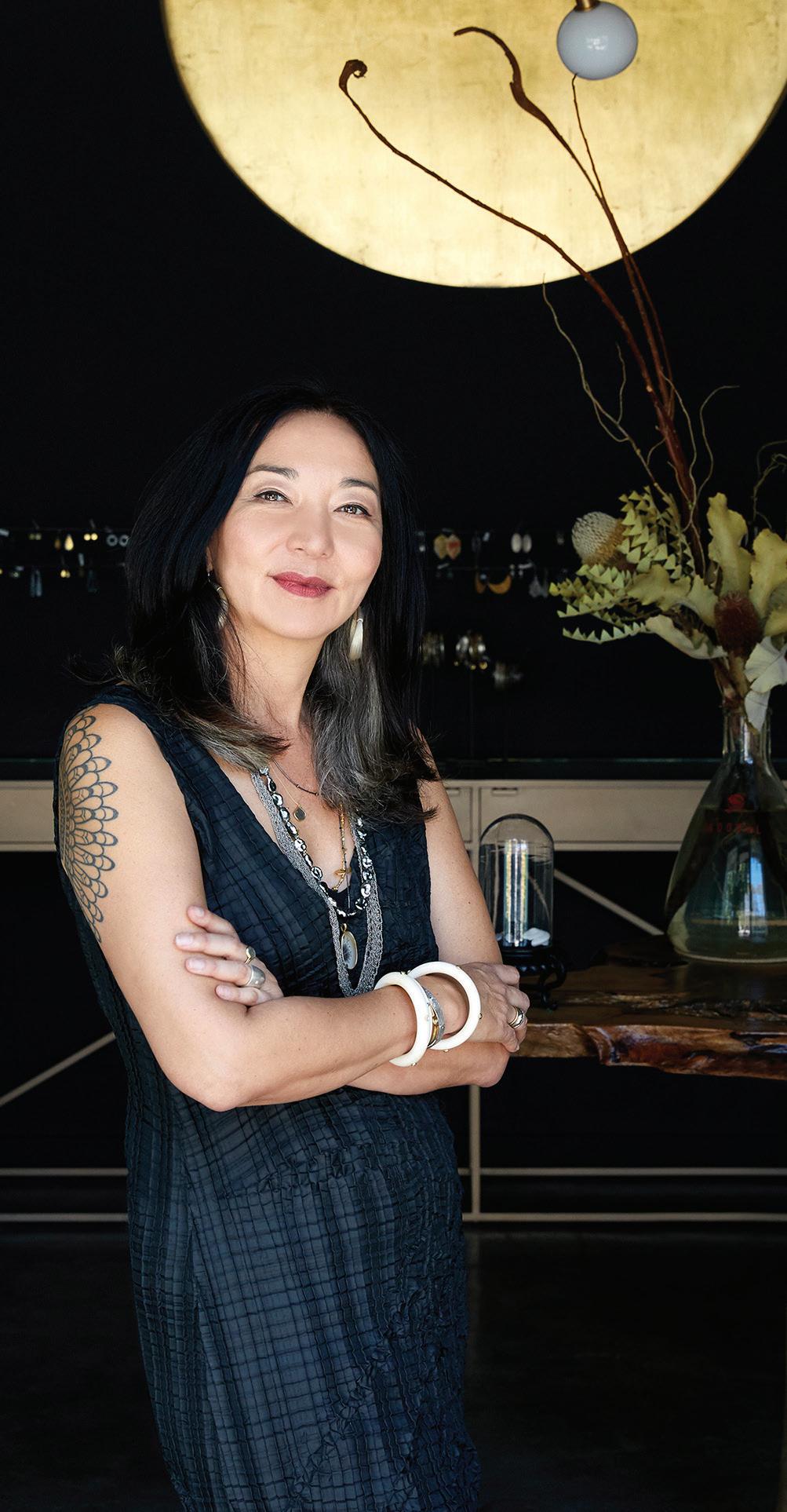
and personal beliefs. “We sell more unique jewelry than most shops, which comes about because I represent artists,” she said.
“I trust their vision to make jewelry that explores their growth, follows their inspiration. It might be crazy, and it takes more work, but we invest in matching the piece with the client. This is because we get to know clients, sometimes over years. When pieces come in, we keep in mind their collection and slowly add to or remake existing pieces. We start by getting them interested in artful expression,” Higashi continued.
Drawn to jewelry makers who use recycled metals, diamonds from certified brokers and pearls cultivated with best practices, Higashi maintains awareness that applying ethical standards requires cultural respect.

“When you draw a line on ethics, you can’t have American ideas envelop the world,” said Higashi. “The industry isn’t perfect, and as Americans we can’t push our ethical practices on other countries. It’s case-by-case, so I prefer to know the metal suppliers and how they treat their staff, how my diamond cutters build housing for their staff. That’s why I want to go this year to Tahiti to see how the pearls are cultured.”
Momentary trends in jewelry frequently captivate the broad market, and Higashi takes note, but avoids jumping on temporary bandwagons, such as gold chains. “What we try to do is be intuitive,” she said.
“Because I’m a businesswoman, I pick that trend up, and we make handmade gold chains and layer them with other elements that result in a high-quality, interesting version. Lately it’s pointy and jig-jagging things. I tell clients to focus on something that has substance and will be lasting. I encourage them to pick the parts of a classic treasure they like, and then we make a custom piece,” Higashi added.
Jewelry that is classic but also contemporary increasingly involves diamonds because the market for diamonds is expanding beyond what was previously mostly traditional white diamonds, according to Higashi. “Diamonds are also found in a lot of
heritage jewelry, and we do custom work that involves old family pieces that are being repurposed. We take them apart and re-assemble them into timeless jewelry a customer can always wear. Pearls are popular now too, especially lately.”
With her love of craft, it would be far easier for Higashi to invest her time, skill and expertise exclusively into her own work—not to mention into her closest relationships, which include Ando Powell, her 13-year-old son; an amicable connection with her ex-husband and father of Ando, sculptor Eric Powell; and a boyfriend.
“My life is all connected,” Higashi said. “Originally, the gallery was in my work/ life space, and that was great because I had a young child. When I moved the gallery to Fourth Street, my son was 10, and even then, he was scootering back and forth between home and the gallery. I don’t segment my life too much—other than to block out time to spend with Ando and my boyfriend.”
There is also satisfaction found in the complexities of a layered life that has merged artistry, sole proprietorship, mentoring, mothering, a romantic
partnership and supporting a community of artists. “We’ve gone from seven staff to 14, and I support the work of 40 artists,” Higashi said.
“When I think about why I do it, it’s the jobs created and the community provided that are satisfying. I have a lot of ideas and can work them out in different ways. I’d say the process of bringing it all together is like a cocktail. You bring all these elements together and don’t know what will happen. I love the surprise and taking a little risk to ignite something,” she noted.
With her mind attuned to the present day, Higashi is equally aware of the future and a time she may choose to step away from the gallery. “My focus has been on getting my team to be invested to take over the business when I get older,” she said. “There’s real value for jewelry to be a retail location where you can come in and touch things. Special stores like ours and others, once they go away, they’re gone forever. I’m mentoring the next generation because the world is intense. I’ve picked up creativity and supporting individuality to be a shining light into the world, so it doesn’t ever go dark.” ❤

Chez Panisse alum offer genuine hospitality at Banter Wine in El



 BY Je rey Edalatpour
BY Je rey Edalatpour
HUMBLE GRAPES Tastings at Banter range from multigenerational Eastern European wines to Oregon chardonnays and ‘weird’ wine from Texas.
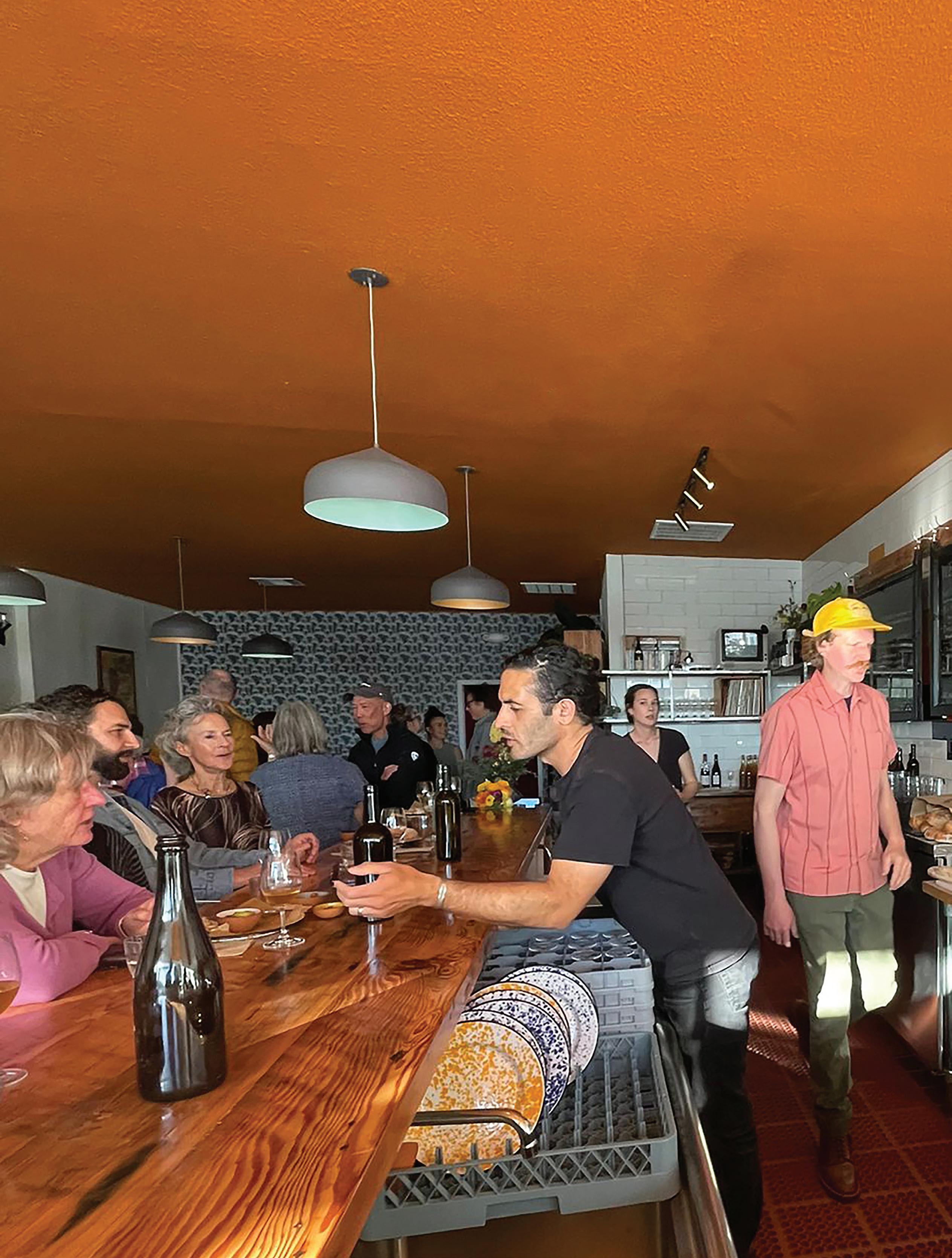
Most couples who have a glass of wine after work don’t go on to start their own wine bar and shop. But five months ago, Claire Sullivan and Devin Hohler opened Banter Wine in El Cerrito. The pandemic pause prompted the couple to reconsider the direction of their lives. “We can keep working for other people, or maybe we could have a wine bar, hang out with each other, pour wine and listen to good music,” Hohler recalled them thinking. The personal—drinking wine at home—quickly morphed into the professional.

Sullivan and Hohler decided to take a look at commercial properties in their neighborhood to see what was available. When they visited an address on San Pablo Avenue, they saw the potential and contacted the landlord to start the process of negotiation, which was “something that felt super unattainable. We thought we were going to be told, ‘No,’ by everybody. We just kept on being told, ‘Yes,’” Sullivan said. By September 2021, they signed the lease and began to make the space their own.
The two aren’t amateurs who are suddenly dipping their toes in the hospitality business. They met while they were both working at Chez Panisse, that East Bay fount of culinary creativity from which chefs, cookbook authors, nutritionists, teachers and oenophiles spring. “We worked in the industry for a long time,” Hohler said. “It’s not like we were going to open a wine bar or a used car lot.”
Hohler started working in restaurants when he was 16 years old and was hired at Chez Panisse as a busser in 2013, subsequently getting promoted to be a bartender. After tasting wine at the restaurant, he realized, “It’s a hell of a beverage.”
Similarly, Sullivan started as a Chez Panisse busser and then a waiter in the downstairs café. And her parents own a wine importing company. “My mother is French and comes from a winemaking family,” she said.
“The primary thing most of us who worked at Chez Panisse take from it is the intense feeling of hospitality,” Sullivan explained. “The true joy of bringing people together over food and wine is
something that has definitely inspired all the offshoots to go out and do the same.” She added that offering a genuine sense of hospitality isn’t a forced smile—but the real joy of welcoming someone into a space and making them feel at home.
After working in an environment like Chez Panisse, where everybody has a shared passion, Hohler asked the question, “What can we offer that’s not necessarily being done?” They wanted to start a wine bar that was humble, inviting and friendly. Ultimately, that’s the message Alice Waters instilled in her employees.
The Banter wine stock isn’t limited to one region. Sullivan and Hohler buy domestic, French, Italian and Spanish wine. There are a few outliers from Georgia, Mexico and South Africa. “We’re not trying to restrict ourselves,” Sullivan said. “We do tend to have a majority of French wine because I grew up around them, but we’re not putting ourselves in a box.”
“We also work with a handful of different importers and distributors,” Hohler added. “We taste with them on a weekly basis. Whatever they bring in, we decide if we like it or not.” Their tastings range from Eastern European wines that have been made the same way for hundreds of years to Oregon chardonnays and “weird” wine from Texas. Hohler said he’s not a sommelier. “My primary
goal with wine is more humble, to enjoy it. I can sometimes get notes of random things, but want to be able to pair it well with food,” he explained.
Banter Wine doesn’t have a full menu with a chef in the kitchen. “We have a cheese plate, a meat plate, olives and almonds and little anchovies,” Sullivan said. Those are classic snacks to eat with wine. “They’re healthy, a little fatty and a little crunchy,” she added. “We’re inspired by wine bars in France. You have a little something to accompany wine. Oftentimes, that’s something very simple like a piece of cheese or an olive in the afternoon.”
The vibe at Banter, as Hohler described, is meant to be “warm and inviting.” He and Sullivan didn’t want people to be apprehensive about going to a fancy wine bar. It’s okay if one doesn’t know anything about wine. Hohler plays rock ‘n’ roll on the record player, in a space with a pinball machine and concert posters hanging on the walls. “The space is a living, breathing thing that’s constantly being improved upon,” he said. “Our vision going into it was to have a very relaxing living room feeling, and that’s what we’ve done.”
Banter Wine
Open Wed to Sat, 4-9pm
10368 San Pablo Ave., El Cerrito instagram.com/banter_winebar
